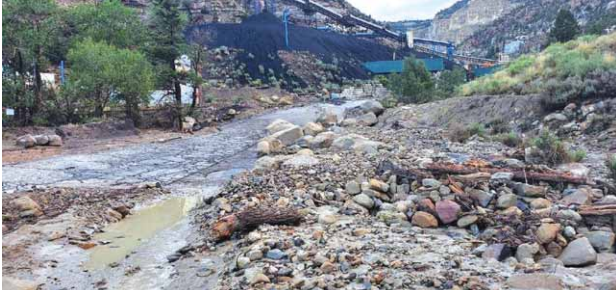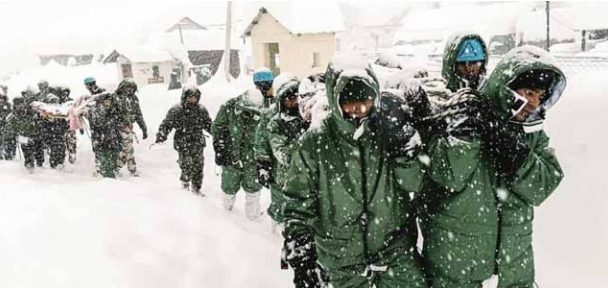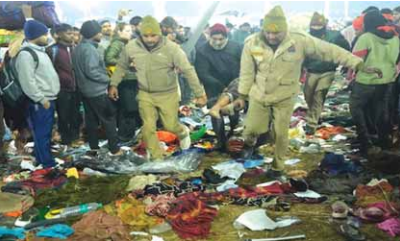The correlation between rising temperatures and escalating gender-based violence is having a major impact on women and girls worldwide. The effects of heat stress on social dynamics and individual behavior underscore the urgent need for integrated climate and gender-based violence policy interventions.
Extreme heat fuels violence in ways that are just beginning to be understood. Rising temperatures have an impact on mental health and human behavior, and evidence has shown that warmer temperatures correlate with a 4% increase in interpersonal violence and a 14% rise in intergroup conflicts globally.
But neither heat nor violence affects everyone equally. Women and girls are facing heightened risks from both the direct physical threats of extreme heat and the violence triggered by increasing temperatures and fueled by patriarchal norms.
Extreme heat exacerbates the drivers of violence that enable and normalize violence against women and girls. A 2018 study in Madrid highlighted a 40% increase in the risk of intimate partner femicide following heatwaves, alongside spikes in police reports and helpline calls. Similarly, a 2021 study in Kenya found women in regions hit by extreme weather events, including heat waves, were 60% more likely to report intimate partner violence.
Closer to home, a comprehensive study across India, Pakistan, and Nepal from 2010-2018 tracked nearly 195,000 girls and women aged 15-49. It found that a 1°C rise in average annual temperature correlated with more than a 6.3% increase in incidents of physical and sexual violence.
Notably, India, with the highest rate of intimate partner violence among the countries included in the study, saw the sharpest rise in reported abuse: an 8% increase in physical violence and a 7.3% increase in sexual violence with each degree of temperature rise. In other words, as temperatures climb during extreme weather, so too does the rate of gender-based violence.
In Australia, an analysis of nearly one million reported incidents of gender-based violence over 13 years revealed complex ways extreme heat intersects with social issues. The study found that while reports of domestic, non-domestic, and sexual violence overall increased with temperatures, it was domestic violence indoors that showed the most notable rise during hotter periods, particularly in the summer. This suggests that extreme heat not only raises tempers but also has a more pronounced effect on violence within the home.
When we consider the impacts of heat stress, our focus often centers on its effects on productivity and health. Yet extreme heat also has significant consequences for our social fabric, particularly interpersonal relationships. Currently, 1 in 3 women worldwide have been subjected to physical and/or sexual violence in their lifetimes. Adding extreme heat to the picture only intensifies what is already a significant public health issue and a violation of women’s rights.
Physiologically, heat stress can impair judgment and heighten irritability, potentially leading to increased aggression, with women often bearing the brunt. Sociologically, the pressures exerted by extreme heat further strain family and community dynamics and relationships.
Women from marginalized communities face compounded risks during heatwaves, as factors like immigration status, ethnicity, unemployment, and substance abuse by a partner increase their risk of experiencing gender-based violence. This extreme heat layers onto the existing frustrations, contributing to an atmosphere where pressures more readily boil over into violence.
As temperatures climb during extreme weather, so too does the rate of gender-based violence.In lower-income households, the intersection of heat stress and vulnerability can put women in perilous situations, as they often shoulder the dual pressures of rising domestic tensions and increased household responsibilities. Household economic insecurity is a known driver of intimate partner violence. For many communities, these vulnerabilities are exacerbated by heat stress and the broader climate crisis. Extreme heat can trap women indoors, reinforcing their isolation and dependency, and exacerbating power imbalances that result in higher instances of domestic violence.
In rural areas, where a high heat-related increase in violence has been observed, droughts can force women to travel greater distances to collect water, leaving them at greater risk of sexual violence. Crop failures and economic strains on farming communities can likewise push women to migrate for work and take more significant risks, increasing their exposure to sexual violence and trafficking.
All these factors can place women, their partners, and families under extreme stress, inflating rates of gender-based violence. A study in Bangladesh found a correlation between heatwaves and child marriage, with 50% of 11- to 14-year-old girls and 30% of 15 -to 17-year-old girls more likely to be married.
The risk of violence women may face during heatwaves is a stark reminder that climate change is not only an environmental issue but a social justice challenge that affects the most vulnerable among us. As Asia and the Pacific braces for more severe heatwaves, the silent crisis of violence, often hidden behind closed doors, calls for urgent attention and action.
Some countries in the region do recognize gender-based violence in their Nationally Determined Contributions (NDCs), an important step in integrating gender-based violence in climate-related work. The Cambodia 2020 NDC states that “by exaggerating gender inequality, climate change also reinforces a structural root cause of violence against women and girls”. The Viet Nam 2021 NDC notes that pressure from climate-related stress in the family “increases the risk of domestic violence and violence towards children”.
Given the limited data on the linkages between heatwaves and gender-based violence, more data is required to design interventions to prevent and address gender-based violence before and during heatwaves. Addressing the dual challenges of extreme heat and violence, including gender-based violence, requires coordination among the health sector, disaster management bodies, women’s organizations, and other service providers that work to prevent and address the consequences of gender-based violence.
Green spaces have shown to lower the incidence of violence, stress and depression and provide low-income citizens with much needed respite from poor ventilated homes. Integrating gender-responsive cooling strategies into national and local heat action plans, fostering gender-informed sustainable building designs including for cooling shelters, and providing access to green spaces for everybody, are all initial steps that strengthen women’s resilience to heat and support the well-being of every citizen.
Climate change adaptation which increases women’s resilience to heat stress can be designed to simultaneously address gender-based violence and climate change impacts. In Tajikistan, ADB is providing targeted support for women farmers by providing them with agricultural inputs and production technologies, financing, capacity building, while also providing support services to address gender-based violence. Service providers and healthcare workers need to also be sensitized to the increased risks of gender-based violence during periods of heat stress.
By focusing on the physical and social dimensions of climate change adaptation and resilience to heat stress, we can lay the groundwork for a future where safety, health, quality of life, and dignity of women and girls across the region is integral to the climate change response.
Source:
Asian Development Bank
How to Confront Gender-Based Violence in a Warming World






